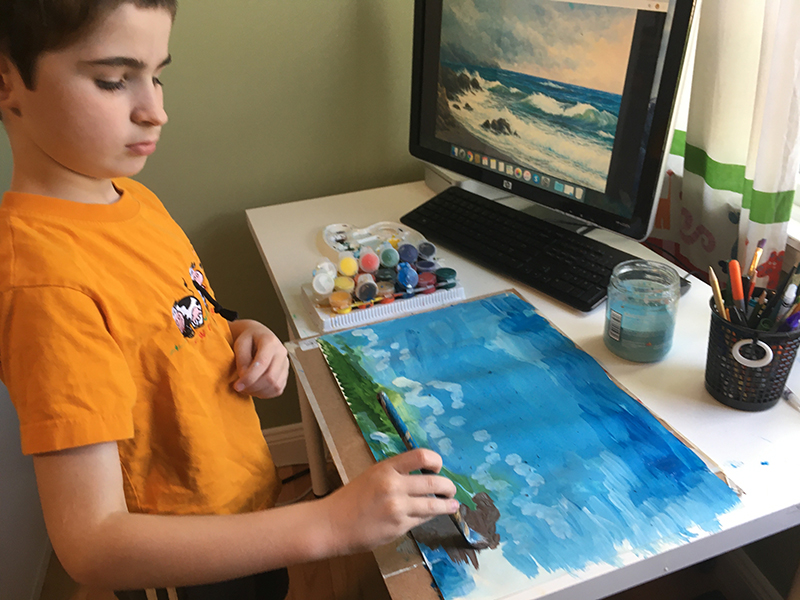
Online art studio: How it works
LIVE SYNCHRONOUS INSTRUCTION. I provide live online classes, that include theoretical material (lecture, slides and/or video), demonstration of techniques, and supervised time for students to work on their projects. I use multiple cameras that show the demo from different angles, if necessary, very close-ups, so all the students can see the details.
COMMUNICATION AND FEEDBACK. On-demand classes like those on Skillshare or Masterclass are great if you’re only looking for a step-by-step tutorial. My classes include individual feedback, with small class sizes and a possibility of individual 1:1 breakout rooms. Classes are no bigger than 12 participants. Small classes and live interactive sessions allow the students to communicate with each other and see each other’s works, which is very valuable in the learning process. At the same time, those who need more privacy when painting or drawing, will have their own safe space.
YOUR SPACE SETUP. That’s great if you have a whole big room to draw and paint. However, not everyone can boast of having that. I recommend limiting the number of supplies to what you actually may need. Drawing and working with watercolor is great for tiny workspaces, as well as any type of colored pencils. Acrylic painting also does not require much space, but be sure, however, to protect your tables and carpenters from acrylic paints, as they can leave stains. Overall, setting up your working space for online art classes is much easier than you’d think!
TECHNOLOGY. Online art classes are delivered using the Zoom platform. Students need to have Zoom and Google accounts to access the class and have all the tools for videoconferencing. For access to the live Zoom session, you will only need a link to join the class, a computer (laptop) with a camera, and a microphone. You can join the classes from many other devices, including your smartphone, but I recommend using a laptop and downloading a Zoom app so that you will have access to all the features. Besides the Zoom tool, we will use one of the additional Learning Management Systems – Google Classroom, Seesaw, or Class Dojo (for the youngest students). These are online platforms that help organize all the class materials, from syllabi to handouts for each lesson. I usually post there reference pictures, slides, and videos for the lessons. Also, those are places where students can upload pictures of their work, get feedback from the instructor and their peers, and exchange any other class-related information. In the case of using Google Classroom (which is my favorite tool by far), students typically will need to have a Google account.
INDEPENDENT WORK. Part of the projects is supposed to be completed as “independent work” or “homework, without direct instruction. In most cases, the works are reviewed during the following synchronous class and/or via Google Classroom feedback. Students will have 24/7 access to all the materials, and home assignments. Students can post pictures of their completed work in order to receive feedback.
SUPPLIES. Students will need to purchase their own supplies. Each class has a list of suggested supplies, that can be bought either on Amazon/another online store or at any local art supplier.
If you are not familiar with Google Classroom, you can watch this tutorial:
